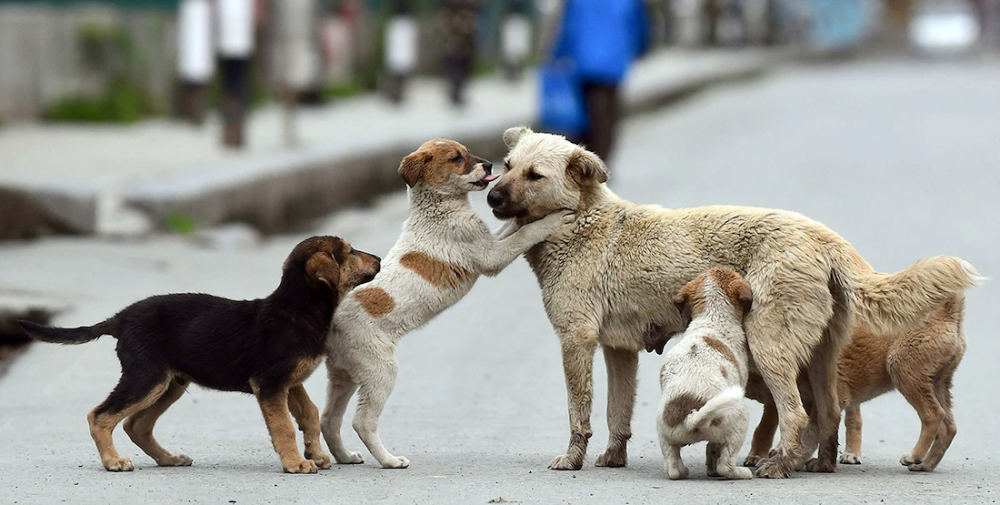
India’s capital faces eight-week deadline to shelter one million street dogs amid rabies concerns; W.H.O. estimates up to 20,000 annual deaths
2024 Government Data: 3.7 million reported dog bites nationwide
New York, N.Y. – India’s Supreme Court has issued an unprecedented directive requiring Delhi and its surrounding suburbs to remove all stray dogs from public streets within eight weeks, marking one of the most ambitious animal control efforts in the nation’s history. The order comes as authorities grapple with an estimated one million stray dogs roaming the capital region and mounting concerns over rabies transmission.
The court’s decision, announced Monday, stems from alarming statistics showing Delhi residents face increasing risks from dog bites. Government data reveals 3.7 million reported dog bite cases nationwide in 2024, with Delhi, Noida, Ghaziabad, and Gurugram experiencing particularly sharp increases in stray dog populations according to municipal sources.
Indian street dogs are predominately a breed recognized as “Indian pariah dog” (desi kutta), with erect ears, a wedge-shaped head, and a curved tail. There is archaeological evidence that the dog was present in Indian villages as early as 4,500 years ago.

Court Mandates Comprehensive Shelter Infrastructure, But No Funding
The Supreme Court’s directive requires establishing multiple shelters across Delhi and its suburbs, each designed to house at least 5,000 dogs. These facilities must include sterilization and vaccination capabilities, along with closed-circuit television monitoring systems to ensure proper care and security.
Legal news website Live Law quoted the court emphasizing child safety: “Infants and young children, not at any cost, should fall prey to rabies. The action should inspire confidence that they can move freely without fear of being bitten by stray dogs.”
The ruling represents a significant departure from existing protocols. Current regulations mandate returning sterilized dogs to their capture locations, but the court explicitly prohibited this practice, declaring sterilized animals must remain in shelters rather than returning to public areas.

Animal Welfare Groups Challenge Timeline
Animal rights organizations have expressed serious reservations about the court’s ambitious timeline and approach. Nilesh Bhanage, founder of PAWS, a prominent animal rights group, criticized the directive’s feasibility.
“Most Indian cities currently do not have even 1% of the capacity needed to rehabilitate stray dogs in shelters,” Bhanage said. The activist emphasized that effective solutions require “strengthening the implementation of existing regulations to control dog population and rabies—they include vaccination, sterilization and efficient garbage management.”
The criticism highlights fundamental infrastructure challenges facing Delhi authorities. Housing one million dogs would require unprecedented shelter capacity, staffing, and financial resources that currently don’t exist in India’s urban centers.
Public Health Crisis Drives Urgent Action
India’s rabies burden represents a significant public health challenge. The World Health Organization acknowledges uncertainty about the true scope, noting “the true burden of rabies in India is not fully known; although as per available information, it causes 18,000-20,000 deaths every year.”
Government statistics present conflicting data. Parliamentary records show 54 rabies deaths in 2024, up from 50 in 2023, figures dramatically lower than W.H.O. estimates. This discrepancy suggests potential underreporting of rabies-related mortality across the country.
The court also mandated establishing a dedicated helpline within one week for reporting dog bites and rabies cases, aiming to improve data collection and emergency response capabilities.
Implementation Challenges Loom Large – Basically, Impossible
Delhi’s eight-week deadline presents ‘enormous logistical challenges.’ Constructing shelter facilities for one million animals requires substantial land acquisition, construction resources, and trained personnel. Each facility must accommodate 5,000 dogs while providing medical care, sterilization services, and ongoing maintenance.
The financial implications remain unclear, with no public cost estimates for the massive undertaking. Municipal authorities must secure funding for construction, staffing, veterinary care, and long-term animal maintenance across multiple facilities.
Animal welfare experts argue that mass roundups without adequate preparation could create humanitarian crises for the animals involved. Overcrowded, understaffed shelters historically struggle to maintain humane conditions, potentially creating new problems while addressing dog bite concerns.
Alternative Approaches Gain Support
Advocacy groups promote comprehensive strategies addressing root causes of stray dog proliferation. Effective waste management reduces food sources that attract and sustain large stray populations. Systematic vaccination and sterilization programs can control population growth while reducing rabies transmission risks.
Several Indian cities have implemented successful trap-neuter-return programs, demonstrating that population control doesn’t require permanent shelter confinement. These initiatives combine sterilization with vaccination, creating immune barriers against rabies while gradually reducing overall numbers through natural attrition.
Public health experts emphasize that sustainable solutions require addressing human behavior alongside animal management. Improved garbage disposal, responsible pet ownership, and community education contribute significantly to reducing human-animal conflicts.
Regional Impact and National Implications
The Supreme Court’s decision affects not only Delhi but also major suburban centers including Noida, Ghaziabad, and Gurugram. These areas have experienced rapid urbanization, creating environments where stray dog populations flourish alongside inadequate waste management systems.
Success or failure in Delhi could establish precedents for other Indian cities facing similar challenges. Mumbai, Bangalore, Chennai, and other metropolitan areas maintain substantial stray dog populations that generate comparable public health concerns.
The ruling also reflects broader tensions between animal welfare advocates and public safety concerns. India’s cultural and religious traditions generally promote animal protection, but practical urban management requires balancing compassionate treatment with human safety needs.
As Delhi authorities begin implementing the court’s directive, the outcome will test whether large-scale animal control efforts can succeed without comprehensive infrastructure and sustained commitment. The eight-week timeline may prove optimistic, but the court’s intervention highlights urgent needs for addressing India’s stray dog crisis through coordinated public health and animal welfare approaches.
Delhi Courts Order Mass Stray Dog Roundup, Without Providing Funds (Aug. 13, 2025)
Summary
India accounts for 36% of global rabies-related deaths, with the World Health Organization estimating 18,000-20,000 annual fatalities from the disease. Delhi’s Supreme Court has ordered all stray dogs removed from streets within eight weeks, requiring massive shelter construction capable of housing one million animals. Animal welfare groups criticize the timeline as unrealistic, advocating instead for strengthened vaccination and sterilization programs alongside improved waste management.
#DelhiStrayDogs #IndiaSupremeCourt #AnimalWelfare
#PublicHealth #RabiesControl #UrbanPlanning #AnimalRights
TAGS: Delhi, India, Supreme Court, stray dogs, rabies, animal welfare, public health, shelters,
vaccination, sterilization, PAWS, World Health Organization, urban planning, animal control
